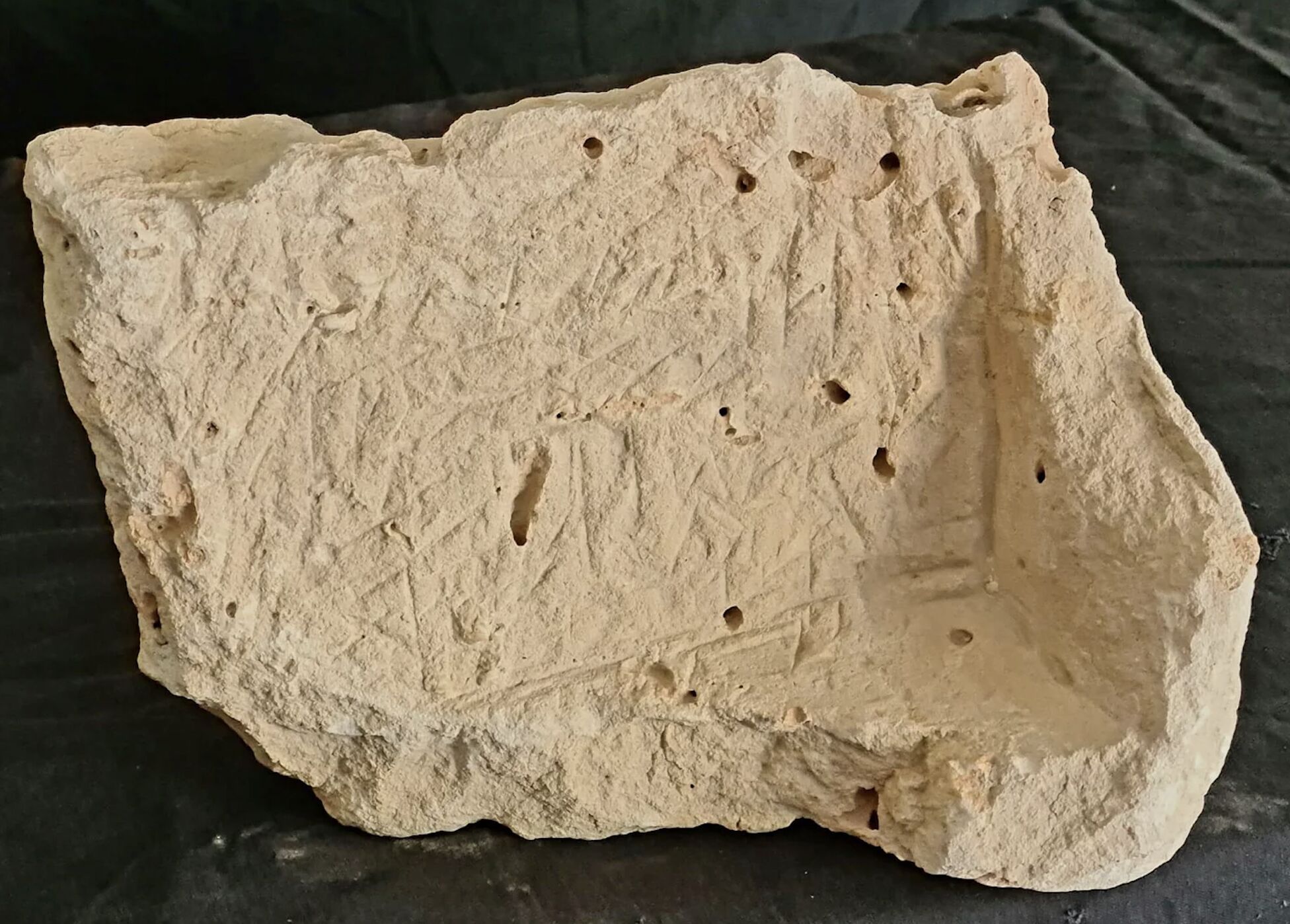
During 2010 excavations of a Bronze Age ritual area in the City of David near the Gihon Spring (an enigmatic area known as the “Pillar Temple”), archaeologist Eli Shukron discovered a peculiar chunk of stone, roughly 27 by 21 centimeters in size, marked with unusual etched striations. Now, 12 years on, epigrapher Prof. Gershon Galil, head of the University of Haifa’s Institute of Biblical Studies and Ancient History, has presented his own analysis of the stone object: that it actually represents the earliest inscription discovered in Jerusalem.

The stone block, dating to sometime around 3,300 years ago, bears the following 63-letter Proto-Canaanite/Early Alphabetic text, as submitted by Galil: “Cursed, cursed, you will surely die; Cursed, cursed, you will surely die; Governor of the city, you will surely die; Cursed, you will surely die; Cursed, you will surely die; Cursed, you will surely die” (from the following: “ARWR, ARWR, MT TMT; ARWR, ARWR, MT TMT; SR H’R, MT TMT; ARWR, MT TMT; ARWR, MT TMT; ARWR, MT TMT”).

Evidently, the stone’s scribe had some kind of a conflict of interest with the ruler of the city at the time. “Whoever did this really wanted the governor to die,” stated Galil, who opines that it may have represented some kind of political opposition. The “governor of the city” is a well-attested-to post underneath the king, found in the Bible and various inscriptions.
The “messy” appearance of the script is not unusual for early alphabetic inscriptions: Such pre-standardized inscriptions could be written from left to right, right to left, boustrophedon (“as the ox plows,” alternating left to right to left again), or from top to bottom. As a result of these variations (among other things), such inscriptions “are notoriously difficult to read,” states epigrapher Prof. Christopher Rollston.
Galil informed the Times of Israel that his forthcoming academic article has been accepted by a scientific journal but is yet to be submitted. Rollston, for his part, has expressed doubts about the discovery, wondering if these are “not letters but repetitive decorative motifs and striations. … In due time, scholars will have full access to these and sober interpretations will come forth,” he wrote in a guest post on Zwinglius Redivivus.
Still, as Haaretz’s detailed article on the find pointed out, “Galil shares that biblical archaeologist [and epigrapher] Dr. Robert Deutsch noted on the accuracy of the newly revealed Jerusalem inscription: ‘The letters are very clear and the text is easy to read.’” A statement from the Israel Antiquities Authority noted that comment would be reserved until after the academic publication.
We look forward to finding out more about this enigmatic stone piece.

